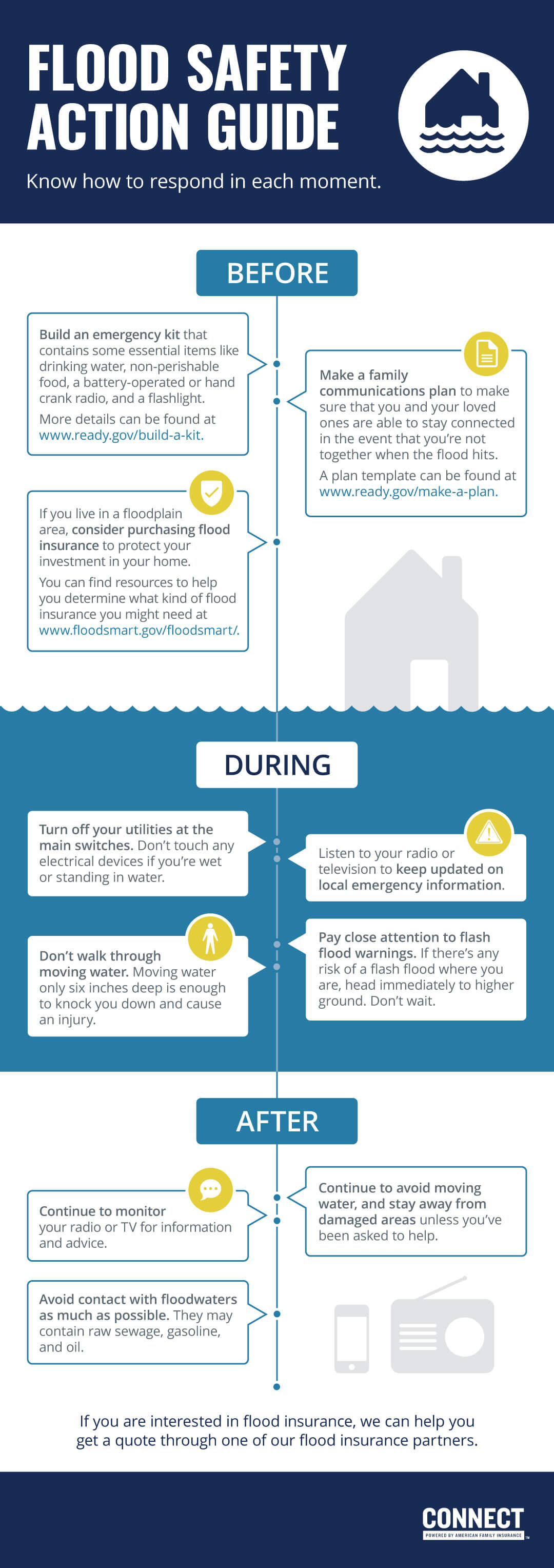Know how to respond in each moment.
Before:
Build an emergency kit that contains some essential items like drinking water, non-perishable food, a battery-operated or hand crank radio and a flashlight. More details can be found at www.ready.gov/build-a-kit.
Make a family communications plan to make sure that you and your loved ones are able to stay connected in the event that you’re not together when the flood hits. A plan template can be found at www.ready.gov/make-a-plan.
If you live in a floodplain area, consider purchasing flood insurance to protect your investment in your home. You can find resources to help you determine what kind of flood insurance you might need at www.floodsmart.gov/floodsmart/.
During:
Turn off your utilities at the main switches. Don’t touch any electrical devices if you’re wet or standing in water.
Listen to your radio or television to keep updated on local emergency information.
Don’t walk through moving water. Moving water only 6 inches deep is enough to knock you down and cause an injury.
Pay close attention to flash flood warnings. If there’s any risk of a flash flood where you are, head immediately to higher ground. Don’t wait.
After:
Continue to avoid moving water and stay away from damaged areas unless you’ve been asked to help.
Continue to monitor your radio or TV for information and advice.
Avoid contact with floodwaters as much as possible. They may contain raw sewage, gasoline and oil.
If you are interested in flood insurance, we can help you get a quote through one of our flood insurance partners.


